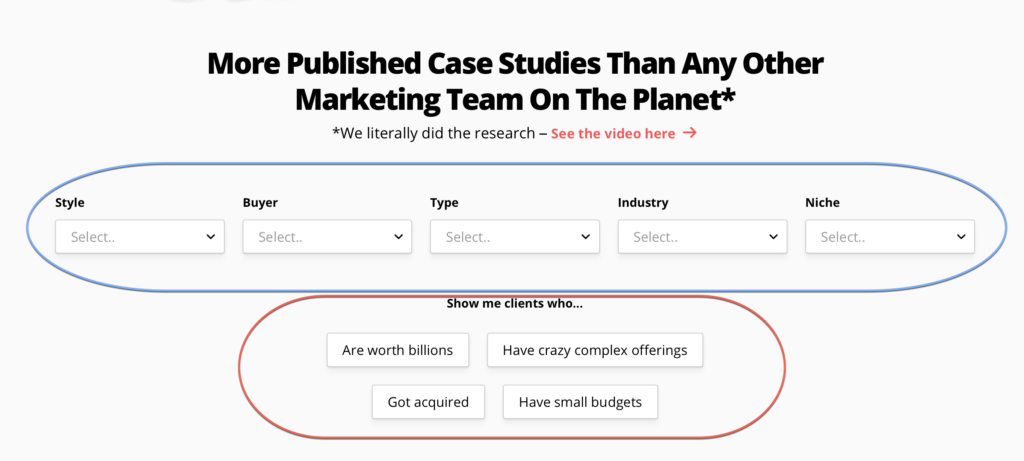Here’s a CRAZY clever bit of copy and UX that I wish more companies were brave enough to try:
Our client, KlientBoost, has a fantastic amount of customer success stories—so many that they need to help prospects find the ones most relevant to them.
So here’s how they’ve set up their “results” page:

As you can see, they provide users with two types of filtering systems.
The first system (which I’ve circled in blue) follows conventional wisdom (read: logic). Users can use it to find case studies based on largely rational criteria.
But then there’s that brilliant little section below it, which I’ve circled in red.
And that section will light up the curious, emotional side of the brain like the fourth of July.
Do you see it? It’s those pre-defined, ‘fun’ filters that include parameters such as “got acquired” and “have crazy complex offerings.”
I love these filters because they speak to hidden objections and motivations that I’m CERTAIN leads have, such as:
- Can you handle a huge, international brand?
- What if I have a tiny budget?
- Our offering is complicated; can you handle it?
- We want to get bought out. Can you make it happen?
That dynamite red section is FAR more true, on a human level, to the interests their prospects come in with.
Logic in blue.
Emotion in red.
Your UX/microcopy can appeal to both sides of the buying brain, but if I’m a betting man, I’m guessing the section in red is getting clicked a whole lot more than the blue (at least on desktop!)
The lesson here? Be brave. Try more things like this on your case study pages.
Remember, you’re selling to humans that have brains AND emotions.
Unfortunately, many companies forget this—and they display studies on their websites with no intuitive way for leads to find what is actually relevant to their pain or desired outcome.
These quirky, yet smart, filters are one way of fixing that.
If you’d like to have more case studies to filter in the first place, we should connect RIGHT NOW, because weexist to make that not only possible—but dramatically easier.
Contact us to start the conversation.